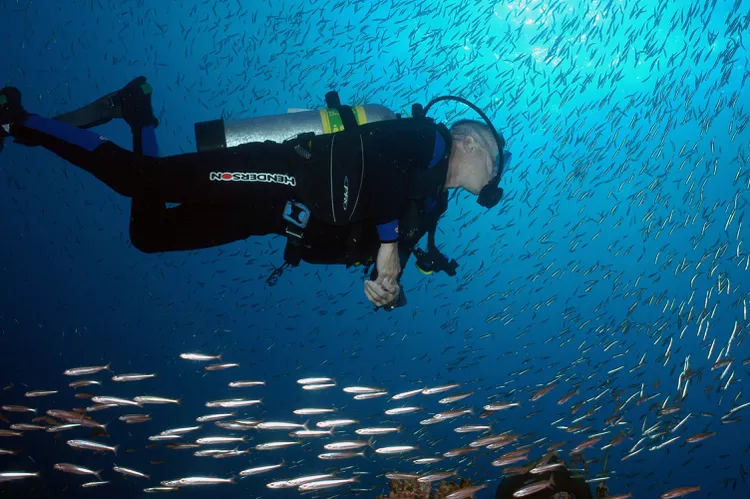Guide to Getting Started Scuba Diving
1. Determine If You Meet The Physical Prerequisites for Scuba Diving
2. Choose a Scuba Diving Course
3. Buy or Rent Dive Gear
4. Learn Essential Dive Theory
5. Practice Simple Skills With an Instructor
6. Ask Away!
Have you ever dreamed of floating weightlessly like an astronaut, investigating unusual species like a field researcher, or looking for lost objects like a treasure hunter? Scuba diving can make these dreams a reality! Scuba diving is relatively easy and only requires a short period of training to get started. Whether your goal in diving is fish watching, ocean conservation, or simply meeting other adventurous people, 70% of the globe becomes accessible to you the moment you learn to breathe underwater!
Here are easy steps to take to start learning to scuba dive.
Step 1: Determine If You Meet The Physical Prerequisites for Scuba Diving
With contemporary advances in dive equipment, medicine, and training, people of all ages and sizes can safely learn to dive. Most individuals who have a basic level of physical fitness and are comfortable in the water can participate in scuba diving.
However, there are a few medical conditions that are contraindicated for scuba diving. Therefore, be sure to read the fitness for diving/dive medical questionnaire before enrolling in a scuba diving course.
• Health and age prerequisites for scuba diving
Step 2: Choose a Scuba Diving Course
While diving (like any sport) has some inherent risks, these risks can be effectively managed when divers learn to check and use their gear properly and follow safe diving guidelines. A wide variety of scuba diving courses is available, allowing divers to start enjoying the underwater world safely.
Most scuba diving centers offer everything from “try dives” (where curious individuals can show up and try scuba diving in a pool with no commitment) to open water courses that certify a diver for life.
Step 3: Buy or Rent Dive Gear
Scuba diving is an equipment-dependent sport. A diver needs a full set of well-maintained, properly fitting scuba gear before they can start diving. Most scuba diving courses include rental gear in the price of the course, so it is not essential for a diver to own a complete set of gear. In fact, many divers never purchase a full set of gear but prefer to rent or purchase only personal items such as wetsuits, fins, and masks.
Of course, owning dive gear has many advantages. Divers who own their gear can be certain of its fit, function, and maintenance, and they are usually more comfortable and confident underwater than those who do not.
Step 4: Learn Essential Dive Theory
Descending into the underwater environment affects a person in ways that they may not expect. To be safe and prepared to start diving, a person must first understand how diving will affect their body and gear.
- Buoyancy Basics for Scuba Diving
- Ear Equalization Basics
- Nitrogen Absorption
- Safety Stops
Step 5: Practice Simple Skills With an Instructor
After you have reviewed dive theory with an instructor and obtained scuba gear, you will be able to take your first breaths underwater; however, you are not ready to jump off the boat just yet! Learning to dive requires the mastery of skills such as clearing water from your scuba mask and regulator (your breathing apparatus).
A certified scuba instructor will help you learn these skills, as well as underwater communication and problem management.
Step 6: Ask Away!
Remember that when learning a new activity there are no “stupid” questions. Here is a list of some of the most common questions that student divers ask. If you have a question that you do not see listed, feel free to reach out for assistance. You will find that instructors are eager to help!





